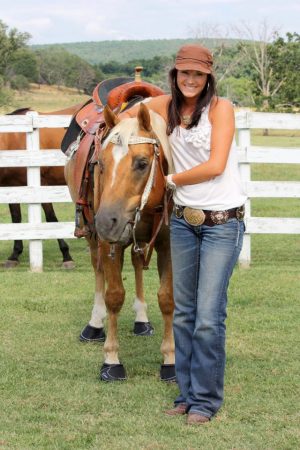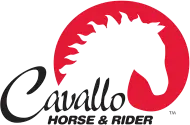What is White Line Disease?

What is White Line Disease and how can I help keep my horse’s hooves healthy?
Cavallo President Carole Herder shares her advice….
A: Without good hooves, horses do not survive. They are flight animals. If they can’t run away, they do not make it. You may think this is not applicable today while looking at your horse standing in the comfort of a secure barn. There are no crouching tigers ready to pounce. But we are talking about 50 million years of evolution. Make no mistake that paying attention to healthy hooves is as important today as it ever was. In fact, we would say that it is even more imperative today because of the imposed domesticity and human interference which can compromise the natural hoof function.
So, what is a healthy hoof and what can we do to cultivate it? Let’s start with a simple description of what we can readily see with our naked eye and conclude this part of the series with an example of a common problem that is within our ability to control.
The material of the hoof is made of an inner layer called Corium, and a harder outer shell that is like our fingernail material. The softer Bulbs are at the back, behind the Hoof Wall. The Frog is pie shaped with the point towards the toe and angling out towards the Bulbs. There are two grooves on either side of the frog called Frog Sulci or Collateral Grooves and through the center is a cleft called the Central Sulcus. What we call the Bars are the continuations of the outside hoof wall, pivoting at the Buttress to form another triangle shape that borders the sulci. The Buttress is the point where the outside wall turns back up towards the toe. The Hoof Wall is tough and should be somewhat flexible and fibrous. It surrounds the entire hoof and is divided into three parts – the Heel, Toe and Quarters. The Sole at the bottom provides support for the major internal structures. The White Line is the material between the sole and the wall, which can be more clearly seen after a fresh trim. This line can be subject to disease.
Various theories attempt to explain the cause of White Line Disease. One is that it is an invasive fungus which enters the area through the sole. Another is that bacteria enters as a result of injury and damage to the hoof wall. It can also be a result of chronic laminitis, which, in itself has several causes. And finally, some current theory holds that it is a metabolic disturbance involving aging. The thing we know for sure with White Line Hoof Disease is that the white line material is not healthy. Now this too, can be a result of various factors. Why did the wall or sole become weak enough to allow invasive bacteria to enter? Why does the disease take hold when some horses get injured and not others?
Simply put, catching it early is a big part of the battle of White Line Hoof Disease. Clean and examine your horse’s hooves regularly, looking for any signs of trauma, sores, disturbances or openings in the hoofv wall and sole. If something looks questionable, treat it.
You can use preventative methods easily by turning to a natural treatment that is not toxic or does not have negative side effects. I always suggest apple cider vinegar for bacterial problems and tea tree oil for wounds. White Line disease does not like air. It’s called an Anaerobic Condition, thriving on an absence of oxygen. When you apply a treatment, you can protect it and keep it in place with your Cavallo Hoof Boots, but only temporarily because the area also needs air to heal. It’s a bit of a balancing act to alternate between treatment and air exposure. In this case do not leave your boots on 24/7. You can also cover the drainage holes on your Cavallos and then pour a soaking solution into them. It’s a great way to soak the hoof without having to stand your horse in a bucket. Then after a 30-60-minute soak, dry the hoof well and expose the clean treated hoof to air. Check it frequently. If it does not respond to your treatment quickly, call your Vet.
This disease is often progressive. It gets worse without treatment and can reoccur over time. After you have treated the symptom, look for the original cause. Balancing the hoof is of utmost importance. Your trimmer should be well versed in front to back, side to side balance and what is required of a hoof that supports a thousand-pound horse. With a white line problem, separation is usually present. Think of it like leveraging the hoof wall away from the hoof, like a long fingernail being pulled away from the finger. Ouch! This detachment can be corrected with proper trimming.
The nutrients in freely flowing blood can help heal the problem and prevent further damage to the hoof. This is a very good reason for you to encourage your horse to move. Movement helps blood circulate. He may be a bit sore, so use your Cavallo Hoof Boots to protect his feet and get your horse moving. Increasing the nutrients and oxygen with increased blood flow will go a long way towards wellness. Proper circulation helps to encourage the hoof strength and elasticity required to support your horse from the ground up.
Cavallo Horse & Rider’s Trek Hoof Boots are the most flexible, durable, breathable and user friendly addition to the Cavallo Hoof Boot collection. The honeycomb design maximizes strength and minimizes weight for the comfort your horse deserves. Great for the relief of chronic pain or hoof sensitivity; rehabilitation from injuries, abscesses, navicular disease, laminitis/founder, punctures, sole bruising and contracted heels. Trek can easily be adjusted for close contact and snug fit to individual horse’s hooves. Can also be used for protection during trailering and breeding or taken on the trail as a “spare tire” for lost shoes. Trek Hoof Boots are now available in Red, Black and Green on Regular and Slim Sole styles.
